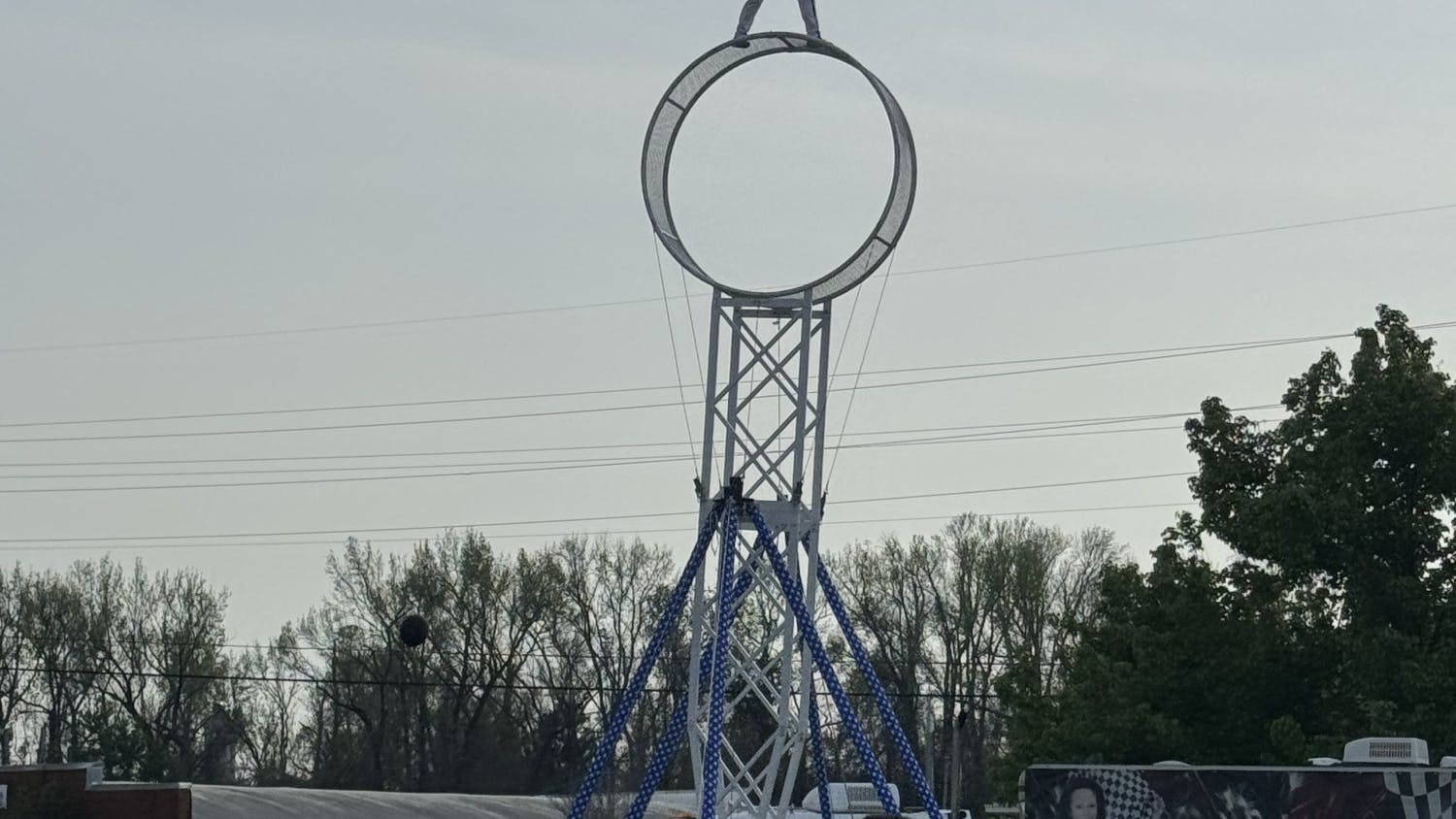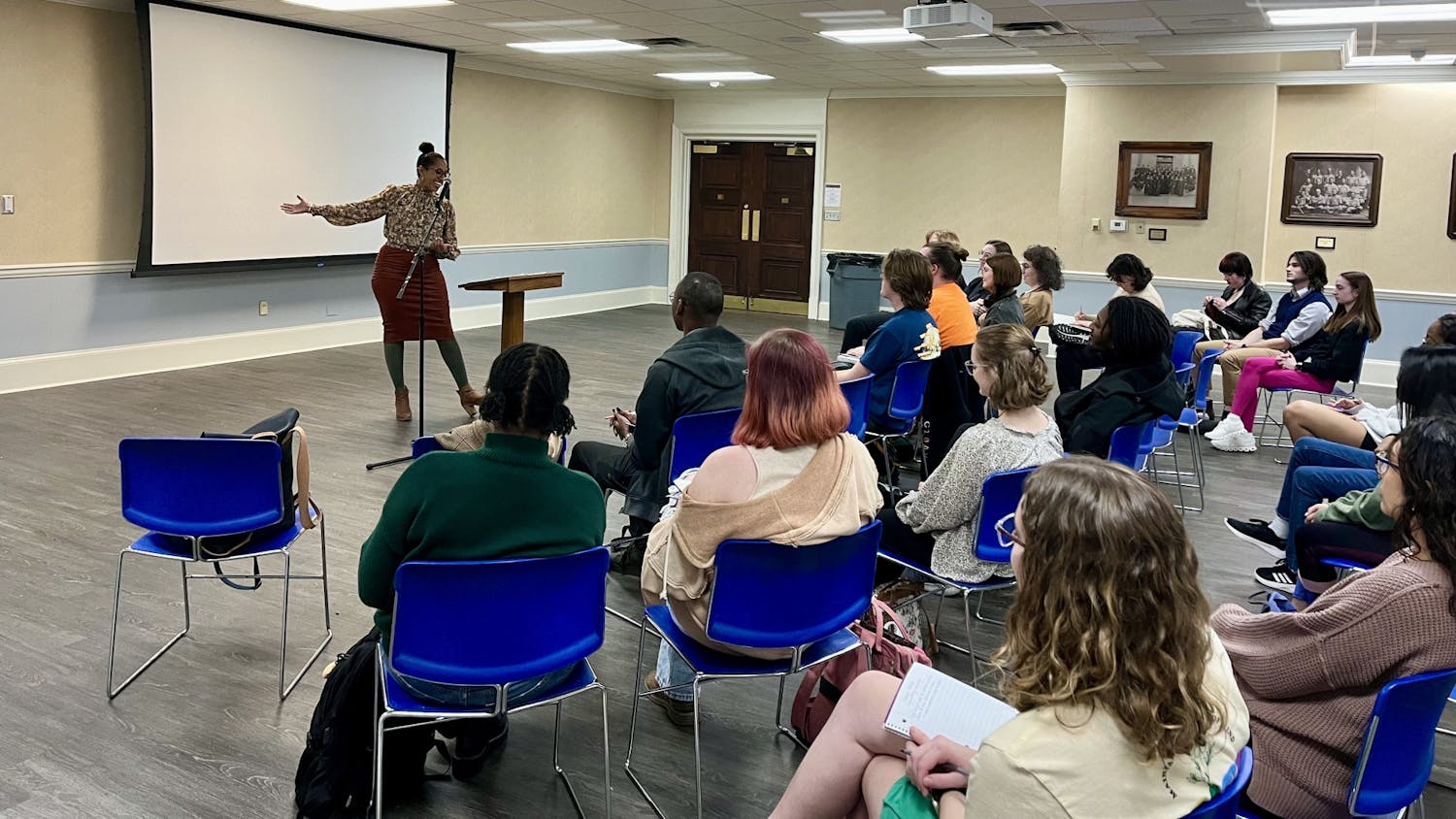Collage is the new theme that is visiting the Plunkett Gallery this semester. The touring “GLUE” exhibit is an international survey exhibition that explores contemporary trends in the art of collage. This show mixes raw studio collages with finished works, displaying methods from traditional cut paper to more elaborate digital and photographic works.
The exhibition is here at Mercer University for a limited time through the end of February.
Along with the touring pieces, the exhibit features some works of Mercer professor Stephen Simmerman. His piece, a 3-D collage that consists of an old CRT screen, a projector and another metal piece, was not meant to be in the collection, but was added in when co-curator, Mercer professor Dr. Craig Coleman, was setting up the exhibit with curator Brendan Jamison. “I listened to a podcast about the 100th anniversary of [Marshall] McLuhan’s birth, and it was about how many of the things he predicted so long ago has become the norm. The first part started with a drawing of him on the CRT screen, and the other things I just started to add to.”
Coleman is also featured in the exhibit with a series of digital photographs in the collection. He said that his inspiration for the pieces came from his past experience with different types of photography. “The camera, when you take the lens off and look inside is a big space where the light falls and captures the image,” said Coleman. “And so what I was thinking is that where the image is captured is very similar to the back wall of the theatre where the movie is projected and so I thought, “What if you treat that part of the camera that way?’”
The curator of the exhibit, Jamison, has pieces featured in the collection, from his current project. He is currently in the middle of working on the project, which involves documenting a decommissioned spy station known as Teufelsberg, located just outside of Berlin. Jamison is using pictures of the spy station in the project, and is also researching the station for more knowledge about it. The pieces in the collection initially appear as individual photographs, but are in fact photos that have been cut into shapes and then glued onto the original picture.
“The show has very obvious examples of collage, and then less obvious examples of collage,” said Coleman. “The show is trying to display the way that artists are using collage, not only as a precious art object, but also to work out ideas.” In one example, the artist used two different pictures that were placed on top of each other to show the association between the images. The top picture showed Chinese couples sitting on the bank of a river equidistant from each other, while the bottom picture showed where the artist had created booths for couples to sit in and look over the river. Coleman said that this brings up the question of what a collage is, and whether the bottom picture could be considered a collage, since the artists had actually built the booths and put them in the landscape.
The exhibit itself also fits the theme, as the amount of pieces keep it from being limited in the confines of the gallery. Some of the pieces, such as Simmerman’s 3-D collage and Jamison’s collage photos, are just inside the entrance of Hardman Hall. “We expanded out here, and I was saying that this [the lobby] is all a collage. Like this piece starts here, so is this [fire hydrant] part of the collage? Are these benches part of the collage?” said Coleman.
The next stop for the exhibit will be the University of Florida.




